The Well-Tempered Ear
Classical music: The amateur Middleton Community Orchestra, with pianist Thomas Kasdorf, closes its eighth season impressively by shining new light on music by Schumann and Brahms
Leave a Comment
By Jacob Stockinger
Here is a special posting, a review written by frequent guest critic and writer for this blog, John W. Barker. Barker (below) is an emeritus professor of Medieval history at the University of Wisconsin-Madison. He also is a well-known classical music critic who writes for Isthmus and the American Record Guide, and who hosts an early music show once a month on Sunday morning on WORT FM 89.9 FM. For years, he served on the Board of Advisors for the Madison Early Music Festival and frequently gives pre-concert lectures in Madison.
By John W. Barker
The amateur Middleton Community Orchestra (below) closed its eighth season with another program of mainstream works. Maestro Steve Kurr clearly likes to challenge his players not only with demanding music, but also with works so familiar that audience expectations are extra high.
Of the two works presented, the first was the beloved Piano Concerto in A Minor by Robert Schumann. He wrote it for his wife, born Clara Wieck and an acclaimed pianist, to show off her talents. The soloist was the ubiquitous Thomas Kasdorf (below), a Middleton native and UW-Madison graduate who finds the MCO a wonderful platform in which he can have experience with a range of concertos.
Kasdorf is clearly working to make this concerto his own. He strove to integrate the polarities of melodiousness and showiness in the first movement, and seemed to have settled nicely into the extravagance of the final movement.
But it was the middle movement that intrigued me. (You can hear that movement, played by Sviatoslav Richter, in the YouTube video at the bottom.) Usually treated as a simplistic interval between the other movements, it emerged here as music of true delicacy, much of it a dialogue between the soloist and the orchestra. I daresay Kasdorf (below) will be able to make even more of this work as he grows in it, but he is off to a persuasive start.
The other warhorse — if you will — on the program was the Symphony No. 1 of Johannes Brahms. Kurr was the more daring in tackling it since the Madison Symphony Orchestra had already performed it just this past February. It is a deliberately monumental work, an ostentatious demonstration by Brahms that he had truly arrived as symphonist. Consequently, the composer made his players work hard to bring this off.
Though it sounds unfair, my initial grading would be an “incomplete”: a performance in the making. This was true certainly in the first movement, which did not yet have full coordination and coherence.
A major problem was the orchestra’s horn section. Brahms certainly wrote strong music for them in this work, but these players were occasionally inaccurate and, most damaging, far too loud and out of balance with the full ensemble. That distorted or undercut the performance all the way.
On the other hand, the string choir (below) continues to mature, and it delivered a very satisfying sound in the passages featuring it.
Most important of all, however, was Kurr’s interpretative approach, particularly in the second and third movements. These are usually presented as bits of superficial repose between the big flanking movements. But Kurr almost made them the genuine center of the work.
Taking much slower tempos than we usually hear, Kurr (below) turned the slow movement into a flow of beautiful sound, the third movement a subtly clever piece of whimsy. And the introduction to the finale, again taken more slowly than usual, unfolded with a powerful eloquence of its own, the more to pave the way for the Big Tune in the remaining body of the movement.
I am not sure I would advocate always treating Brahms’s First this way. But I salute Kurr for making me think anew about a score I had assumed I already knew well. He was able to lead his players, despite any shortcomings, in a performance of genuine artistic perceptions—an achievement in which this orchestra can take great pride.
Tags: #AmateurMusician, #AmericanRecordGuide, #BrassMusic, #ClaraSchumann, #ClaraWieck, #FirstSymphony, #HornSection, #IsthmusNewspaper, #JohannesBrahms, #JohnW.Barker, #MadisonEarlyMusicFestival, #MadisonSymphonyOrchestra, #MainstreamWorks, #MeadWitterSchoolofMusic, #MedievalHistory, #MiddletonCommunityOrchestra, #MiddletonPerformingArtsCenter, #MiddletonWisconsin, #PianoConcerto, #RobertSchumann, #SteveKurr, #SviatoslavRichter, #SymphonicMusic, #ThomasKasdorf, #UniversityofWisconsin, #UniversityofWisconsin-Madison, #WORT-FM89.9, amateur, Arts, blog, Cello, challenge, Clara Schumann, Clara Wieck, Classical music, composer, Concert, concerto, critic, Early music, earlymusic, eloquence, familiar, finale, History, interpretation, introduction, Isthmus, Jacob Stockinger, Johannes Brahms, John W. Barker, lecture, life, Madison, Madison Early Music Festival, Madison Symphony Orchestra, mainstream, MCO, Medieval, melody, MEMF, monumental, movement, Music, Orchestra, Piano, players, power, pride, professor, Retirement, review, soloist, Steve Kurr, symphony, talent, United States, University of Wisconsin-Madison School of Music, University of Wisconsin–Madison, Viola, Violin, viruosity, warhorse, Wisconsin, WORT-FM 89.9, YouTube
Classical music: The Middleton Community Orchestra, with solo violinist Paran Amirinazari, closes its seventh season with rousing and intense performances of Prokofiev and Tchaikovsky
Leave a Comment
By Jacob Stockinger
Here is a special posting, a review written by frequent guest critic and writer for this blog, John W. Barker. Barker (below) is an emeritus professor of Medieval history at the University of Wisconsin-Madison. He also is a well-known classical music critic who writes for Isthmus and the American Record Guide, and who hosts an early music show once a month on Sunday morning on WORT FM 89.9 FM. For years, he served on the Board of Advisors for the Madison Early Music Festival and frequently gives pre-concert lectures in Madison.
By John W. Barker
On Wednesday night, the Middleton Community Orchestra (below) closed its seventh season with a rousing program offering three contrasting Russian works.
The opener was the Overture to Alexander Borodin’s Prince Igor, as realized by Alexander Glazunov. It served to show off the orchestra’s ever-developing string band, solid in tone, if still lacking a little in warmth.
A real gem was the second work, the Violin Concerto No. 2 by Sergei Prokofiev. By contrast with the composer’s first venture in that form — a taut, aggressive affair — this one is more relaxed and jovial, if no less demanding technically.
The soloist was Paran Amirinazari (below), stepping out of her usual concertmaster’s slot into the full spotlight. She handled admirably the great technical demands of her solo role, full of quirky and tricky writing.
But, amid all the spikiness she pointed up handsomely the real and almost neo-Romantic lyrical sweetness that Prokofiev infused into the showiness. (Just listen to the gorgeous second movement in the YouTube video at the bottom.)
This is one of the truly great violin concertos, and Amirinazari — the brilliant artistic director of the fabulous Willy Street Chamber Players — demonstrated that adroitly.
The final work was a grand effort: Tchaikovsky’s Symphony No. 5. This is, of course, one of those “warhorses” about which The Ear has been debating lately. It is thereby the more challenging for an orchestra to present to an audience likely to be familiar with it.
Its calculated lavishness has made it a masterpiece beloved by the public, but it is still fascinating to encounter with close listening. The composer pulled out all his tricks of dazzling orchestration and melodic invention, but in the service of a grand-scaled structure that skillfully manipulates cyclical and cross-referential transformation of themes through the score’s totality.
Maestro Steve Kurr (below) by now has nurtured remarkably solid resources for an orchestra of this kind. The potent brass choir is really well consolidated, backing fine-sounding woodwinds. Kurr made the most of these resources, in a well-rehearsed performance in which the stress on intensity of playing resulted in highly dramatic results, culminating in a truly noble ending.
This was a richly satisfying program, showcasing an ensemble of which Middleton should be button-burstingly proud.
Tags: American Record Guide, Artistic director, Arts, band, Borodin, brass, Cello, Chamber music, Classical music, concertmaster, critic, Early music, emeritus, ending, ensemble, gem, Glazunov, History, invention, Isthmus, Jacob Stockinger, John W. Barker, lecture, lyrical, lyricism, Madison, Madison Early Music Festival, Madison Symphony Orchestra, Maestro, masterpiece, Medieval, melody, Middleton, Middleton Community Orchestra, movement, Music, nobel, Orchestra, orchestration, Overture, Paran Amarinazari, Prince Igor, professor, program, Prokofiev, Pyotr Ilyich Tchaikovsky, relaxed, Romantic, Russia, Russian, solo, Steve Kurr, strings, structure, sweet, sweetness, symphony, tone, United States, University of Wisconsin-Madison School of Music, University of Wisconsin–Madison, Violin, war horse, warhorse, warmth, Willy Street Chamber Players, Wisconsin, woodwinds, WORT-FM 89.9, YouTube
Classical music: Your warhorses are my masterpieces — and I want to hear them
6 Comments
ALERT: This Sunday afternoon from 12:30 to 2 p.m., “Sunday Afternoon Live From the Chazen” will feature Madison keyboard artist Trevor Stephenson performing on a restored 1855 Boesendorfer grand piano. The program includes music by Chopin, Granados, Brahms, Wagner, Bartok, Debussy, Schoenberg and Satie.
You can attend it live for FREE in Brittingham Gallery No. 3 of the UW-Madison’s art museum. But you can also stream it live using the link on this web page:
By Jacob Stockinger
It’s that time of the year again when music groups announce their new seasons.
And it seems to The Ear that the word “warhorse” is again being tossed around a lot, especially by experienced listeners who use the term pejoratively or disapprovingly, in a snobby or condescending way, to describe great music that is performed frequently.
But more than a little irony or inaccuracy is involved.
For example, a some people have referred to the Symphony No. 1 by Johannes Brahms – scheduled next season by both the Madison Symphony Orchestra (below) and the Milwaukee Symphony Orchestra — as a warhorse.
Yet The Ear has heard that symphony performed live only once – perhaps because programmers wanted to avoid the warhorse label.
The same goes for the iconic Fifth Symphony of Ludwig van Beethoven, which will be performed next year by the Wisconsin Chamber Orchestra (below). It was a revolutionary work that changed the course of music history, and it is a great piece of engaging music. (You can hear the opening movement, with an arresting graphic representation, in the YouTube video at the bottom.)
Here’s the irony: I have heard the Piano Quintet by Brahms, the Cello Quintet by Franz Schubert and the String Octet by Felix Mendelssohn – all great masterpieces — far more often than I have heard those “warhorse” symphonies by Brahms and Beethoven. Can it be that connoisseurs usually seem more reluctant to describe chamber music masterpieces as warhorses? (Below in the Pro Arte Quartet in a photo by Rick Langer.)
The Ear is reminded of a comment made by the great Russian-American musicologist Nicolas Slonimsky (below): “Bizet’s opera “Carmen” is not great because it is popular; it is popular because it is great.”
So yes, I don’t care what more sophisticated or experienced listeners say. I still find the Piano Concerto No. 1 by Peter Tchaikovsky to be a beautiful and thrilling work that rewards me each time I hear it. It never fails.
Add to the list the popular symphonies of Beethoven and Brahms, the “New World” Symphony by Antonin Dvorak, several piano concertos by Sergei Rachmaninoff (below), the Brandenburg Concertos by Johann Sebastian Bach, the “Jupiter” Symphony and Symphony No. 40 in G minor by Wolfgang Amadeus Mozart. And one could go on and on.
They are all great masterpieces more than they are warhorses.
Plus, just because a piece of music is new or neglected doesn’t mean that it is good or that it merits a performance.
Otherwise, you could easily spend the rest of a life listening to second-rate and third-rate works out of curiosity and never feel the powerful emotional connection and deep intellectual insight that you get with a genuine masterpiece that rewards repeated hearings.
Of course, some warhorses do leave The Ear less than enthusiastic The “1812 Overture” comes immediately to mind. Boy, do the crowds like that potboiler — on the Fourth of July, of course, when it has a traditional place.
But often enough your warhorse is my masterpiece, and I want to hear it without being thought of as a philistine.
It might even be that playing more warhorses — not fewer — will attract some new audience members at a time when music groups face challenges in attendance and finances?
It may not be cool to say that, but it might be true, even allowing room for new and neglected works that deserve to be programmed for their merit — not their newness or their neglect.
So-called “warhorses” have usually survived a long time and received many performances because they are great music by great composers that speak meaningfully to a lot of listeners. They deserve praise, not insults or denigration, as well as a secure and unapologetic place in balanced programming.
Of course, it is a matter of personal taste.
So …
What do you think?
Are there favorite warhorses you like?
Are there warhorses you detest?
Leave word in the COMMENT section.
The Ear wants to hear.
Tags: 1812 Overture, A Matter of Taste, America, Arnold Schoenberg, Arts, Bach, Baroque, Bartok, Beethoven, Bizet, Bosendorfer, Brahms, Brandenburg Concertos, Carmen, Cello, Chamber music, Chopin, choral music, Classical music, composer, concerto, crowd, curiosity, Debussy, Dvorak, emotion, Erik Satie, Fifth Symphony, Fourth of July, From the New World, Granados, grand piano, great, hearing, History, insult, intellect, Jacob Stockinger, Johann Sebastian Bach, Johannes Brahms, Jupiter Symphony, listen, listener, Ludwig van Beethoven, Madison, Madison Symphony Orchestra, masterpiece, Mendelssohn, Milwaukee Symphony Orchestra, movement, Mozart, Museum, Music, musicology, neglect, neglected music, new, New Music, New World Symphony, newness, Nicolas Slonimsky, Octet, opera, Orchestra, personal, Peter Ilyich Tchaikovsky, philistine, Piano, Piano Concerto No. 1 (Tchaikovsky), potboiler, praise, Pro Arte Quartet, quintet, Rachmaninoff, Rachmaninov, revolution, Russia, stream, String quartet, strings, Sunday Afternoon Live From the Chazen, symphony, Symphony No. 40 (Mozart), taste, Trevor Stephenson, United States, University of Wisconsin-Madison School of Music, University of Wisconsin–Madison, Violin, Wagner, war horse, warhorse, web, web page, Wisconsin, Wisconsin Chamber Orchestra, Wolfgang Amadeus Mozart
Classical music: It is commencement weekend at the University of Wisconsin-Madison and at many other schools. Here are two pieces by Brahms and Elgar to celebrate the event
2 Comments
By Jacob Stockinger
School is out!
This weekend is Commencement Weekend at the University of Wisconsin-Madison, the University of Wisconsin System and many other colleges and universities across the nation.
Undergraduates will graduate in Camp Randall Stadium (below) today starting at noon.
And continuing students can at last put the hard work of classes and final papers and semester-end papers behind them.
So some celebration seems in order.
The Ear knows of two pieces that are surefire in the way they capture the spirit of the event.
For overall mood, The Ear thinks it is hard to top the upbeat energy of the “Academic Festival” Overture — heard below conducted by Leonard Bernstein in a YouTube video — which Johannes Brahms wrote on the occasion of receiving an honorary degree. It even includes an old Latin student drinking song.
The other piece is the “Pomp and Circumstance” March No. 1 (of 5) by Sir Edward Elgar — heard below in a YouTube video with a chorus singing “Land of Hope and Glory.”
Sure, it is overplayed for everything from elementary school to graduate school. But that is only because it fits the occasion so perfectly and captures the stately poignancy of the moment when you leave one life behind and turn to face another.
Are the two pieces “warhorses”?
Probably.
Make that certainly.
But The Ear thinks some old standards remain standards because they are just that good, not just that old.
Yet if you have other favorite works or you know of other worthy pieces – say, Franz Joseph Haydn’s “Oxford” Symphony that he wrote when he received an honorary degree –please leave word and a YouTube link in the COMMENT section.
Cheers and congratulations to all!
Tags: Academic Festival Overture, Arts, Camp Randall Stadium, cheers, choral music, Classical music, college, commencement, congratulations, degree, drink, drinking, elementary, Elgar, energy, graduate, graduation, Haydn, honorary, honorary degree, Jacob Stockinger, Johannes Brahms, Latin, life, Madison, march, Music, Orchestra, Oxford, Oxford Symphony, pognancys, Pomp and Circumstance, semester, song, stately, symphony, United States, university, University of Wisconsin-Madison School of Music, University of Wisconsin–Madison, upbeat, vocal music, warhorse, weekend, Wisconsin, YouTube
Classical music: Madison Symphony Orchestra’s music director John DeMain discusses the 2017-18 season with critic John W. Barker
6 Comments
By Jacob Stockinger
Here is a special posting, an interview with the Madison Symphony Orchestra‘s music director John DeMain about the next season, conducted and written by frequent guest critic and writer for this blog John W. Barker.
Barker (below) is an emeritus professor of Medieval history at the University of Wisconsin-Madison. He also is a well-known classical music critic who writes for Isthmus and the American Record Guide, and who hosts an early music show once a month on Sunday morning on WORT FM 89.9 FM. For years, he served on the Board of Advisors for the Madison Early Music Festival and frequently gives pre-concert lectures in Madison.
By John W. Barker
Last month, I had a welcome opportunity to sit down with John DeMain (below, in a photo by Prasad), music director of the Madison Symphony Orchestra, together with his marketing director, Peter Rodgers, to discuss the orchestra’s recently announced 2017-18 concert season. (NOTE: Today is the deadline for current subscribers to renew and keep their seats. You can call 608 257-3734 or go to https://www.madisonsymphony.org/reneworder)
This meeting allowed me new insights into the various factors that go into selecting a season’s repertoire. It also gave me further appreciation of Maestro DeMain’s personality and talents.
It further revealed the unfairness of some criticism made that the coming season is “conservative” and repetitive of familiar works. In fact, his programming involves very thoughtful awareness of the differing expectations of the varied audience.
It has become customary to make the season’s opening concert a showcase for talented members of the orchestra, rather than for guest soloists.
The September program thus offers a masterpiece I particularly relish, Hector Berlioz’s Harold in Italy, a symphony with viola obbligato — featuring the orchestra’s principal violist, Chris Dozoryst (below).
But the inclusion of the neglected Fifth or “Reformation” Symphony by Felix Mendelssohn was decided as a link to this year’s 500th-anniversary commemoration of Martin Luther’s launching of the Lutheran Reformation in 1517. Also on the program is Leopold Stokowski’s orchestral arrangement of the Toccata and Fugue in D Minor for organ by Johann Sebastian Bach.
The October program contains a notable example of a familiar and popular “warhorse,” Antonin Dvorak’s Symphony No. 9, “From the New World.” This was indeed performed by the MSO two seasons back as part of the “Beyond the Score” presentations. DeMain indicates that the close repetition is made deliberately to connect with that past event, to expand further the audiences’ understanding of the work.
He is also juxtaposing the symphony with the appearance of the acclaimed Olga Kern (below), playing the Piano Concerto by Samuel Barber and with the “Mother Goose” Suite by Maurice Ravel.
The November soloist is guitarist Sharon Isbin, in two concertos, one new (“Affinity” by Chris Brubeck) and one old (Concierto de Aranjuez by Joaquin Rodrigo) She plays with her instrument electronically amplified, something very off-putting in my experience. But DeMain notes that all guitarists do that now in concert work, and he wanted to include the guitar to bring in new and different audience members.
Inclusion of suites by Aaron Copland and Manuel de Falla – “Billy the Kid” and “The Three-Cornered Hat,” respectively — also represent popular appeal.
January will bring a triumph for DeMain: the appearance of violinist Gil Shaham (below), after 15 years of efforts to secure him. Shaham will perform the Violin Concerto by Peter Tchaikovsky.
The all-Russian program also allows DeMain to venture for the first time into “The Love for Three Oranges” suite by Sergei Prokofiev and the Third Symphony of Sergei Rachmaninoff.
The issue of “warhorse” repetition is raised by the First Symphony by Johannes Brahms in the February program. But DeMain points out that it has been 10 years since the MSO played the work, a significant one that richly deserves performance by now.
He is also proud to include with it the outstanding Rossini opera overture (Semiramide) and the rarely heard Cello Concerto, with German cellist Alban Gerhardt (below), by the 20th-century British composer William Walton.
DeMain admits to mixed feelings about the “Beyond the Score” presentations of music and background context, but he is confident that the one offered (one night, outside subscriptions) on March 18, about the monumental Enigma Variations, by Sir Edward Elgar, (below) will work well.
The combination in April of Benjamin Britten’s powerful Sinfonia da Requiem and Robert Schumann’s First Symphony (“Spring”) with Antonin Dvorak’s sadly neglected Violin Concerto has special meanings for the maestro. It allows the return of the greatly admired Augustin Hadelich (below) as soloist.
But it also allows DeMain’s return, for his first time since 1974, to the Schumann score, with which he had a crucial encounter in a youthful appearance with the Pittsburgh Symphony.
Finally, the May program is an unusually exciting combination of Mozart’s too-little-appreciated Piano Concerto No. 22 with soloist Christopher O’Riley (below) of NPR’s “From the Top” with the roof-raising Glagolitic Mass, featuring the Madison Symphony Chorus, of Leos Janacek.
DeMain has made important commitments to the orchestral music of Janacek (below) before this, and his advance to the composer’s great blockbuster choral work is a landmark.
Amid savoring DeMain’s thoughts on the season – which also includes the MSO’s traditional Christmas concert in early December — and his wonderful recollections of past experiences, I came to recognize more than ever the remarkable combination of talents he brings to his Madison podium.
Beyond so many conductors, DeMain has had deeply engaging phases of his career in orchestral literature (large and small), in opera and musical theater, and in chamber music, while being himself an accomplished pianist.
With the breadth of his range, he brings a particular sensitivity to the contexts and diversities of what he conducts. He has become to his musicians not only a skilled guide, but also a subtle teacher, deepening their understanding without any hint of pedantry.
It cannot be said enough how truly blessed we are to have him with us in Madison.
For more information about the 2017-18 season, including specific dates and times, and about purchasing tickets for new subscribers and renewing subscribers, go to:
http://www.madisonsymphony.org/17-18
Tags: Aaron Copland, Alban Gerhardt, American Record Guide, amplification, arrangement, Arts, Augustin Hadelich, Bach, Baroque, Benjamin Britten, Berlioz, Beyond the Score, Billy the Kid, blockbuster, Brahms, Cello, Chamber music, choral music, Chris Brubeck, Christmas, Christopher O'Riley, Classical music, composer, concerto, Concierto de Aranjuez, critic, Dvorak, Early music, Elgar, Enigma Variations, From the New World, From The Top, Gil Shaham, Glagolitic, guitar, Harold in Italy, History, Isthmus, Italy, Jacob Stockinger, Janacek, Joaquin Rodrigo, Johann Sebastian Bach, Johannes Brahms, John DeMain, John W. Barker, landmark, lecture, Love of Three Oranges, Luther, Madison, Madison Early Music Festival, Madison Symphony Chorus, Madison Symphony Orchestra, Maestro, Manuel de Falla, marketing, Martin Luther, mass, Medieval, MEMF, Mendelssohn, Mother Goose, Mozart, Music, Music director, New World, NPR, Olga Kern, on-line, online, opera, Orchestra, orchestral, organ, Overture, Overture Center, personality, Pianist, Piano, Piano concerto, Pittsburgh Symphony Orchestra, professor, Prokofiev, Rachmaninpff, Ravel, Reformation, renew, repertoire, Requiem, Robert Schumann, Rossini, Russian, Samuel Barber, score, Semiramide, Sergei Prokofiev, Sergei Rachmaninoff, Sharon Isbin, soloist, Spring, Stokowski, subscriber, Suite, symphony, talent, Tchaikovsky, Three-Cornered Hat, Toccata and Fugue in D minor, traits, United States, University of Wisconsin-Madison School of Music, University of Wisconsin–Madison, Viola, Violin, Violin concerto, vocal music, Walton, warhorse, Wisconsin, Wolfgang Amadeus Mozart, WORT-FM 89.9, YouTube
Classical music: Are they warhorses or masterpieces? Do you agree with the Top 100 classical music pieces as selected by listeners of WQXR?
5 Comments
By Jacob Stockinger
Are they warhorses?
Or are they simply great, surefire masterpieces of classical music that have meaning to many, many people even after repeated listening?
Can they be both?
Can one critic’s warhorse be another listener’s masterpiece?
Think about it and then decide for yourself.
Here is some help.
Every year, WQXR-FM, the famed classical music radio station in New York City, asks its listeners to nominate the Top 100 pieces of classical music. From the holidays through New Years’ Day, Jan. 1, the radio station then airs those pieces in a countdown format. (You can also check out and stream much of WQXR’s regular and special programming by going to: http://www.wqxr.org/#!/
At the top of this year’s list, not surprisingly, is Ludwig van Beethoven (below). Johann Sebastian Bach and Wolfgang Amadeus Mozart are also well represented.
Here is a link to this year’s selections:
http://www.wqxr.org/#!/story/wqxr-2016-classical-music-countdown/
Many, if not most or even all, of the titles will seem quite familiar.
But before you dismiss them as too easy or too popular or overperformed, The Ear reminds readers of what the famed American playwright Edward Albee, who died last year, once observed.
Albee said something to the effect: Great art should move you and make you feel different. If it doesn’t do that, then forget it. You’re wasting your time. Find art that does.
How many of these pieces would fit that criterion for you and how many would you also have named? For The Ear, an awful lot.
How many have you heard, live or on a recording?
How many do you look forward to hearing again – on the assumption that repeated listening brings repeated pleasure and deeper appreciation and understanding?
It is also useful to remember what the great and, at the same time, popular pianist-composer Sergei Rachmaninoff (below) once said: “Classical music is enough for a lifetime, but a lifetime is not enough for classical music.”
So much music!
So little time!
Enjoy the list and the music, and leave your thoughts about these selections or about what is missing in the COMMENT section.
The Ear wants to hear.
Tags: Arts, Bach, Baroque, Beethoven, Cello, Chamber music, choral music, Christmas, Classical music, Compact Disc, concerto, countdown, Early music, Edward Albee, Franz Schubert, George Frideric Handel, Holidays, Jacob Stockinger, Johann Sebastian Bach, Johannes Brahms, Ludwig van Beethoven, Mozart, Music, New Year's, New York City, opera, Orchestra, Piano, playwright, programming, Rachmaninoff, Rachmaninov, Radio, Sonata, stream, symphony, United States, University of Wisconsin-Madison School of Music, Viola, Violin, vocal music, warhorse, Wisconsin, Wolfgang Amadeus Mozart, WQXR-FM
Classical music: The Middleton Community Orchestra closes its fifth season with a lively concert that featured fiery Marquez, subtle Brahms, lyrical Bruch and thrilling Tchaikovsky.
1 Comment
By Jacob Stockinger
Here is a special posting, a review written by frequent guest critic and writer for this blog, John W. Barker. Barker (below) is an emeritus professor of Medieval history at the University of Wisconsin-Madison. He also is a well-known classical music critic who writes for Isthmus and the American Record Guide, and who for 12 years hosted an early music show every other Sunday morning on WORT FM 89.9 FM. He serves on the Board of Advisors for the Madison Early Music Festival and frequently gives pre-concert lectures in Madison.
By John W. Barker
Spring is officially over now, for the Middleton Community Orchestra (below, in a photo by Margaret Barker) has given the fourth and last concert of its fifth season — as usual, on a Wednesday night and before a sizable crowd at the Middleton Performing Arts Center.
The opening work was a rarity from the little-known Mexican composer Arturo Marquez (b.1950, below), called Danzon 2. It is a piece that starts with promise of melodic expression, but soon slips into a piling up of the usual hard-driven Latin dance rhythms, for a large orchestra, playing very loudly. A kind of musical refried beans.
More substantial was the early orchestral masterpiece, the “Variations on a Theme by Haydn” by Johannes Brahms (below).
This is a very thickly scored piece, placing particular emphasis on the winds. I found myself, as I listened, appreciating more than ever how cunningly Brahms designed the seams and sutures among the instruments, taxing the skills of the players for subtlety. Fortunately, the Middleton musicians faced the challenges bravely and brought off a very sturdy and convincing performance.
After the intermission, it was concerto time.
First, as MCO maestro Steve Kurr (below top) has regularly done, the young concertmaster was given a chance to tackle a solo assignment. Valerie Sanders (below bottom), a new graduate from the UW-Madison School of Music, took on the Violin Concerto No. 1 in G minor by Max Bruch, though only its slow movement. She played this lovely music quite sweetly, and one was tempted to wonder how she would have fared in taking on the two bolder wing movements, in the full concerto.
The Big Event was, of course, local pianist Thomas Kasdorf playing the Piano Concerto No. 1 in B-flat minor by Peter Ilyich Tchaikovsky. This is a very warhorse of the warhorses, a work that some will be surprised to learn that predates Van Cliburn, whose recording of it was the first classical album to sell one million copies. (Vladimir Horowitz was once the exponent automatically brought to mind.)
It is a colossally demanding piece, technically, and a summit of virtuosic display — as you can see and hear in the popular YouTube video at the bottom.
Kasdorf (below), a locally born, raised and educated pianist and a well-established young Madison fixture of enormous talent and virtuosity, made this his latest entry into the warhorse corral.
Yes, he had the chops to bring it off, in an undeniably exciting performance. But I had the sense that his heart was really in the quieter passages, where he had some ideas of his own.
In the prevailingly bravura writing, by contrast, he was battling for survival. He certainly won the battle, on technical points alone. But this is not a work he has fully made his own—he played from score, rather than memory. It is an interpretation in progress, rather than one securely controlled.
And I hope this is not a career effort in progress. He is too fine a musician to be just a barn-storming, roof-raising virtuoso. He should pursue rather the great variety of roles he as developed, in which he has so much more that is personal and nuanced to offer.
The orchestra, with fewer perils to face than in the Brahms, sounded confident and full-voiced.
All in all, it was a lively and stimulating concert, as we have come to expect from Steve Kurr and his remarkable Middletonians.
Tags: American Record Guide, Arts, Arturo Marquez, bravura, Classical music, concerto, Early music, Haydn, Isthmus, Jacob Stockinger, Johannes Brahms, John W. Barker, Latin dance, Madison, Madison Early Music Festival, Max Bruch, Medieval history, Mexico, Middleton Community Orchestra, Music, Orchestra, Peter Ilyich Tchaikovsky, Piano, Piano concerto, Piano Concerto No. 1 in B -flat minor, rhythm, theme and variations, Thomas Kasdorf, University of Wisconsin-Madison School of Music, University of Wisconsin–Madison, Van Cliburn, Violin, Violin concerto, vituoso, Vladimir Horowitz, warhorse, wind instruments, Wisconsin, WORT-FM 89.9, YouTube
- May 2024
- April 2024
- March 2024
- February 2024
- January 2024
- December 2023
- November 2023
- October 2023
- September 2023
- August 2023
- July 2023
- June 2023
- May 2023
- April 2023
- March 2023
- February 2023
- January 2023
- December 2022
- October 2022
- September 2022
- June 2022
- May 2022
- April 2022
- March 2022
- July 2021
- June 2021
- May 2021
- April 2021
- March 2021
- February 2021
- January 2021
- December 2020
- November 2020
- October 2020
- September 2020
- August 2020
- July 2020
- June 2020
- May 2020
- April 2020
- March 2020
- February 2020
- January 2020
- December 2019
- November 2019
- October 2019
- September 2019
- August 2019
- July 2019
- June 2019
- May 2019
- April 2019
- March 2019
- February 2019
- January 2019
- December 2018
- November 2018
- October 2018
- September 2018
- August 2018
- July 2018
- June 2018
- May 2018
- April 2018
- March 2018
- February 2018
- January 2018
- December 2017
- November 2017
- October 2017
- September 2017
- August 2017
- July 2017
- June 2017
- May 2017
- April 2017
- March 2017
- February 2017
- January 2017
- December 2016
- November 2016
- October 2016
- September 2016
- August 2016
- July 2016
- June 2016
- May 2016
- April 2016
- March 2016
- February 2016
- January 2016
- December 2015
- November 2015
- October 2015
- September 2015
- August 2015
- July 2015
- June 2015
- May 2015
- April 2015
- March 2015
- February 2015
- January 2015
- December 2014
- November 2014
- October 2014
- September 2014
- August 2014
- July 2014
- June 2014
- May 2014
- April 2014
- March 2014
- February 2014
- January 2014
- December 2013
- November 2013
- October 2013
- September 2013
- August 2013
- July 2013
- June 2013
- May 2013
- April 2013
- March 2013
- February 2013
- January 2013
- December 2012
- November 2012
- October 2012
- September 2012
- August 2012
- July 2012
- June 2012
- May 2012
- April 2012
- March 2012
- February 2012
- January 2012
- December 2011
- November 2011
- October 2011
- September 2011
- August 2011
- July 2011
- June 2011
- May 2011
- April 2011
- March 2011
- February 2011
- January 2011
- December 2010
- November 2010
- October 2010
- September 2010
- August 2010
- July 2010
- June 2010
- May 2010
- April 2010
- March 2010
- February 2010
- January 2010
- December 2009
- November 2009
- October 2009
- September 2009
- August 2009
Archives
- 2,491,419 hits
Blog Stats
Recent Comments
| Brian Jefferies on Classical music: A major reass… | |
| welltemperedear on What made Beethoven sick and… | |
| rlhess5d5b7e5dff on What made Beethoven sick and… | |
| welltemperedear on Beethoven’s Ninth turns 200… | |
| Robert Graebner on Beethoven’s Ninth turns 200… |
Tags
#BlogPost #BlogPosting #ChamberMusic #FacebookPost #FacebookPosting #MeadWitterSchoolofMusic #TheEar #UniversityofWisconsin-Madison #YouTubevideo Arts audience Bach Baroque Beethoven blog Cello Chamber music choral music Classical music Compact Disc composer Concert concerto conductor Early music Facebook forward Franz Schubert George Frideric Handel Jacob Stockinger Johannes Brahms Johann Sebastian Bach John DeMain like link Ludwig van Beethoven Madison Madison Opera Madison Symphony Orchestra Mead Witter School of Music Mozart Music New Music New York City NPR opera Orchestra Overture Center performer Pianist Piano post posting program share singer Sonata song soprano String quartet Student symphony tag The Ear United States University of Wisconsin-Madison School of Music University of Wisconsin–Madison Viola Violin vocal music Wisconsin Wisconsin Chamber Orchestra wisconsin public radio Wolfgang Amadeus Mozart YouTube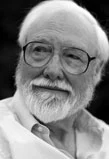






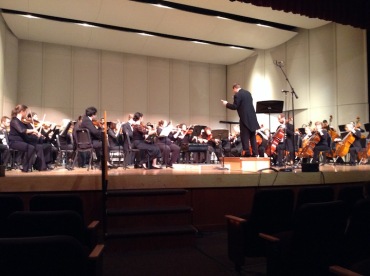


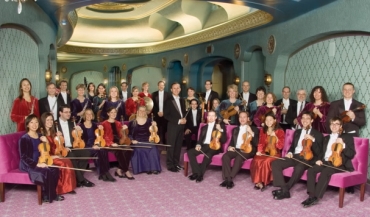





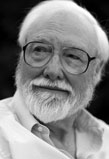
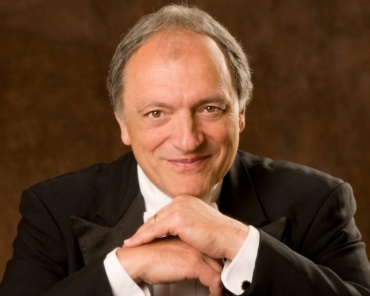






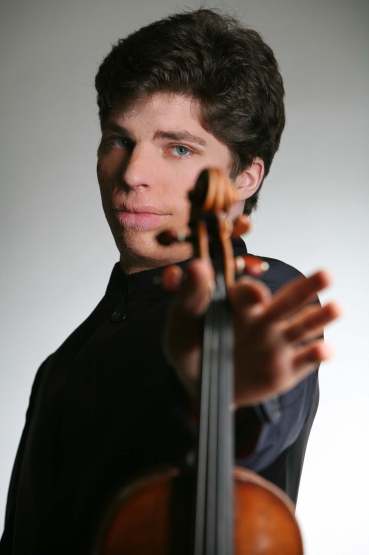
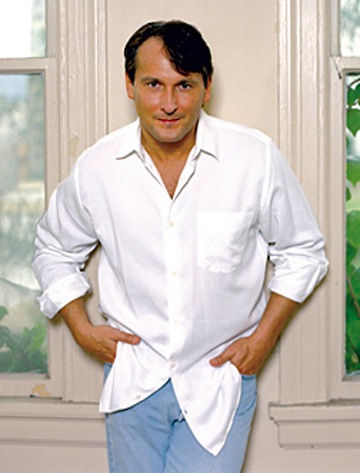

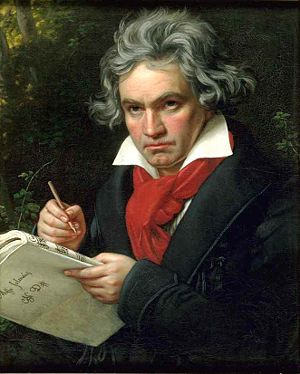






Classical music: Despite overly traditional staging, the Madison Opera’s “Carmen” beguiled and bewitched through the outstanding singing
16 Comments
By Jacob Stockinger
The Opera Guy attended Sunday’s sold-out performance of “Carmen” by the Madison Opera and filed the following review, with photos by James Gill:
By Larry Wells
When I learned that Madison Opera was going to produce Bizet‘s “Carmen,” I was not surprised. It is annually one of the most frequently performed operas internationally, and it is a surefire vehicle for filling seats. It is safe.
On the other hand, once one watches repeated performances of an old favorite, the appeal can diminish. One advantage of an opera is that novel approaches to the production can prevent a warhorse from becoming stale.
I would love to say that the approach both musically and dramatically to this production of “Carmen” broke new ground, but it did not. In fact, the production was as traditional as could be. (Below is the main set, rented from the Lyric Opera of Kansas City.)
I attended a performance of “Carmen” in Tucson a couple of years ago, and the conductor Keitaro Harada breathed new life into the familiar music through interesting tempi and finely nuanced dynamics.
Maestro John DeMain (below, in a photo by Prasad) conducted the Madison Symphony Orchestra in a perfectly fine and occasionally uplifting manner, but there was little new to learn from his approach. The purely instrumental entr’actes shimmered, but during the rest of the opera the singing was at the forefront.
Maestro Harada (below), whom Madison should be actively courting, is currently conducting “Carmen” in Sofia, and the accompanying publicity clip in the YouTube video at the bottom (bear with the Bulgarian commentary) shows that the production is unconventional in its approach although it clearly is still “Carmen.” I would have enjoyed something other than the ultra-traditional staging and sets experienced here in Madison.
At times the production was so hackneyed and hokey that I chuckled to myself – ersatz flamenco dancing, the fluttering of fans, all of the cigarette factory girls with cigarettes dangling from their lips, unconvincing fight scenes, annoying children running across the stage, dreary costumes that hardly reminded me of Seville. And I could go on.
Yet “Carmen” has a way of drawing one in despite oneself. The music is marvelous, and the singing was uniformly excellent.
The four principals were luminous both in their solo pieces and ensembles. Cecelia Violetta López as Micaëla (below right) was lustrous in her two arias as well as in her duet with Sean Panikkar’s Don José (below left).
Panikkar started the performance off with little flair, but from the time he became besotted with Carmen toward the end of the first act he was on fire. He then maintained a high degree of passion and zest in his vocal performance.
Corey Crider (below right) was a wonderful Escamillo, singing his toréador role with great élan despite his unfortunate costumes.
And Aleks Romano (below) as Carmen made the most of her complex character. Her singing was luscious, and her acting – particularly her use of her expressive eyes – was terrific.
Likewise, the lesser roles – Thomas Forde as Zuniga, Benjamin Liupaogo as Remendado, Erik Earl Larson as Dancaïre, a radiant Anna Polum as Fransquita, and Megan Le Romero as Mercédès – were equally well sung. The ensemble work in the quintet at the end of Act II and in the card scene was outstanding.
The chorus (below) sounded terrific throughout, although the women’s costumes and the stage direction made the choristers appear ludicrous as times.
When all is said and done, “Carmen” still beguiled me by drawing me into its characters’ complex psychologies and motivations. Likewise, its music still bewitched me in much the same way as Carmen inexplicably bewitched hapless Don José (below).
But I seem to always wish for more – more compelling productions, more daring music making, more risk-taking.
I do look forward to this coming spring’s production of “Florencia en el Amazonas.” The recording is captivating, and the opera’s performances have pleased a wide variety of audiences by all accounts. And it is something new. Hallelujah!
Did you go to “Carmen”?
What did you think?
The Ear wants to hear.
Share this:
Tags: acting, Aleks Romano, appeal, aria, Arts, beguile, bewitched, Bizet, breathe, Bulgaria, Bulgarian, card, cards, Carmen, Cecilia Violetta Lopez, character, children, choral music, chorus, cigarette, Classical music, commentary, complex, composer, conductor, costumes, dance, dancing, Don José, dramatically, dreary, duet, dynamics, ensemble, entr'acte, ersatz, Escamillo, expression, expressive, eyes, factory, familiar, fan, fight, fine, flair, Flamenco, Florencia en el Amazonas, frequent, frequently, gir;s, ground, hackneyed, hokey, instrumental, international, James Gill, John DeMain, Kansas City, Keitaro Harada, kids, lips, Lyric Opera of Kansas City, Madison, Madison Opera, Madison Symphony Orchestra, manner, motivation, Music, musically, new, novel, opera, Orchestra, Overture Center, Passion, performance, principal, production, psychology, publicity, quintet, recording, Rent, role, safe, scene, Sean Panikkar, seat, set, Seville, singer, Singing, Sofia, sold-out, Spain, stale, surefire, surprise, symphony, tempi, Tempo, toreador, Toreador song, tradition, traditional, Tucson, unconvincing, uniform, United States, University of Wisconsin-Madison School of Music, University of Wisconsin–Madison, vehicle, vocal, vocal music, warhorse, Wisconsin, year, YouTube, zest